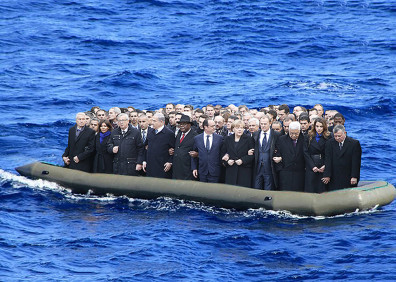I wanted to tie my blog post into the international realm and take a look at class, criminal justice systems, and how we are reacting. The current migrant crisis that Europe is facing right now seems like the best place to start with that. This won’t be about just the criminal justice system for the countries involved. We’ll be speaking about what laws are at the forefront of the discussion, yes, but we’ll also be taking a look at topics more broad in scope. To start, here are a couple great articles that can bring you up to speed. I’m sure most readers are fairly up to date on this so feel free to skim the articles but pay attention to the various pictures and infographics throughout.
First, this top notch article from the BBC that does a great job using pictures to help you understand as well as outlining some potential solutions.
Second we have this New York Times article that talks about some hold-ups migrants are facing.
After reading (or skimming) those we should all be on the same page so lets delve into some major points and discuss the first major ‘law’. The BBC article mentions The Dublin Regulation. That’s a complex European Union Law that I’ll simplify here. Among it’s chief goals is to figure out what country is responsible for an asylum claim or in other words what country has to shelter migrants. The way this was working during the current crisis is most often the first EU country migrants reach receive the burden. This has placed enormous strain on countries like Hungary. I use the past tense because the Dublin Regulation has been suspended by countries like Germany and Hungary in direct response to this crisis. The Dublin Regulation is not strictly a Criminal Justice oriented law, however it does allow other member countries to transport migrants back to the country responsible for sheltering them. This crisis is pushing existing regulations to the breaking point.
The fact of the matter is that no existing laws are coping with this influx. The EU is scrambling to figure out a suitable course of action. Ideas range from using member country navies to cut off the sea routes and sealing the borders to taking a much more prominent role in ending the Syrian civil war to reaching out to the Gulf Arab Countries to aid in sheltering migrants. What the EU comes up with will likely have world altering effects. It’s worth staying up to date.
How does class play into this? I’ve got a great image to help answer that question. (Image Credit: http://www.walkerart.org/magazine/2015/natascha-sadr-haghighian-oped-refugees-eu)
If those people seem familiar that’s because they likely are. If you didn’t recognize them right off the bat the people in that photo are high profile, some are even the leaders of countries. The attire of the people on the raft is in such contrast to the environment it’s comical. For me this really illustrates the class issue occurring. The migrants we are seeing are often in tattered clothes, bloodied, and have facial expression akin to despair. We don’t see the rich or elite fleeing in trucks, rafts, or various other means of transportation. Why? This photo brings me to the two questions (more like five) we should all be thinking about.
- Is class playing a role in this crisis? If yes, in what ways? If no, why not? Why don’t we see or hear about the elite dying as they flee?
- What are some ways the criminal justice system, and laws as a whole, could help ease the burden facing so many EU countries?
Finally, I’d like to leave you all with an image I think a lot of people have forgotten in the face of this crisis. (Image Credit: http://i100.independent.co.uk/article/the-cartoon-that-sums-up-the-worlds-migrant-crisis–g12atJpSWZ)
Featured Image: http://www.newzimbabwe.com/news-22062-Migrants+crisis+Why+Europe+misses+Qaddafi/news.aspx
Thumbnail Image: http://www.telegraph.co.uk/news/worldnews/europe/eu/11557074/Mediterranean-migrant-crisis-EU-leaders-meet-for-emergency-summit.html


